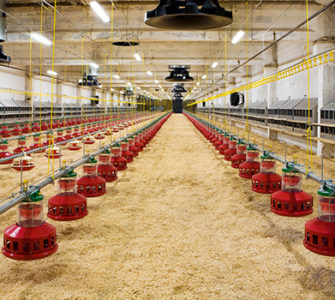Ensuring chick quality in NAE production
The increase in 7-day chick mortality that has come along with the elimination of antibiotics requires a focus on containing bacteria that start in the layer house, Don Waldrip, DVM, senior technical services veterinarian at Zoetis, told Poultry Health Today.
The “no antibiotics ever” (NAE) trend over the past 5 years has prompted many poultry companies to eliminate the use of antibiotics in their breeding stock and in an estimated 75% of hatcheries, Waldrip said.
The result is an increase in the bacterial load, more infection and, with it, an increase in 7-day chick mortality from 1% to 1.5%. Higher mortality is not only costly for producers, it creates a welfare issue, he said.
Without antibiotics, poultry companies need to take other measures to reduce the load of bacteria going into the hatchery, where warm, moist conditions foster bacterial growth. “It’s warm, it’s moist, it’s got nutrients in it,” Waldrip said.
Toward that end, only clean eggs should be sent to the hatchery. Eggs laid on the floor or fecal-stained eggs should not be used. Attention needs to be paid to control of dust and rodents in layer houses.
In the hatchery, more frequent rotation of the disinfectants used and attention to air quality are steps that can be taken; monitoring should demonstrate the bacterial load is going down, not up, he said. The goal is to reduce the load of bacteria chicks have when they move to growout, where they’ll be exposed to even more bacteria.
The challenge, however, doesn’t end once chicks are in the broiler house, Waldrip continued. Efforts to reduce exposure to bacteria need to continue. Maintaining good litter conditions, for example, takes on added importance in NAE flocks, he said.
These are all details that perhaps didn’t get as much attention when antibiotics were used but, without antibiotics, are essential, he said.
Posted on July 30, 2019

















